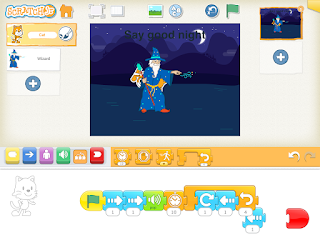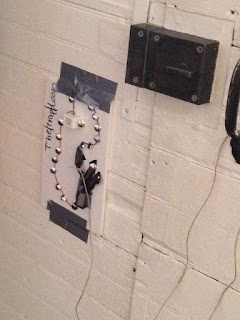 |
| This combination of mechanics and circuitboard made for some good learning. |
We "broke" old toys, a toaster, blender, hair dryer, answering machine, CD player, and coffee maker.
The first time we ran the session, I went to a local recylcling store and found a variety of small appliances that I knew would have something motorized in them. Old CD/Tape decks have pulleys in them, for instance. I avoided anything with glass. No computers. No microwaves. The lower-tech the better.
 |
| Wow did the goop in this handmixer STINK |
Lesson 2: Safety
The kids weren't wearing safety glasses. While nothing did fly about, I would make them wear safety glasses next time. I will also cut the power cords so the kids don't try plugging in the appliances. Nobody tried, but who wants to have a first time on this?
 |
| We should have had safety glasses. |
Lesson 3: Having a purpose for taking apart
At our first break-make series, we all came back together to make something new from what we had taken apart. I had stickers, markers, pipe cleaners, lots of washers/screws/metal gizmos, and the all-important glue gun available. These two girls ended up making a robot out of parts from the boombox they had dismantled.
 At our second series, I put out images from the calendar published to accompany the Smithsonian's exhibition, Things Come Apart. I suggested that we take apart our appliances with the goal of figuring out what all the components were and how they went together. This session was a more thoughtful session and we ended up with some cool photographs.
At our second series, I put out images from the calendar published to accompany the Smithsonian's exhibition, Things Come Apart. I suggested that we take apart our appliances with the goal of figuring out what all the components were and how they went together. This session was a more thoughtful session and we ended up with some cool photographs.












